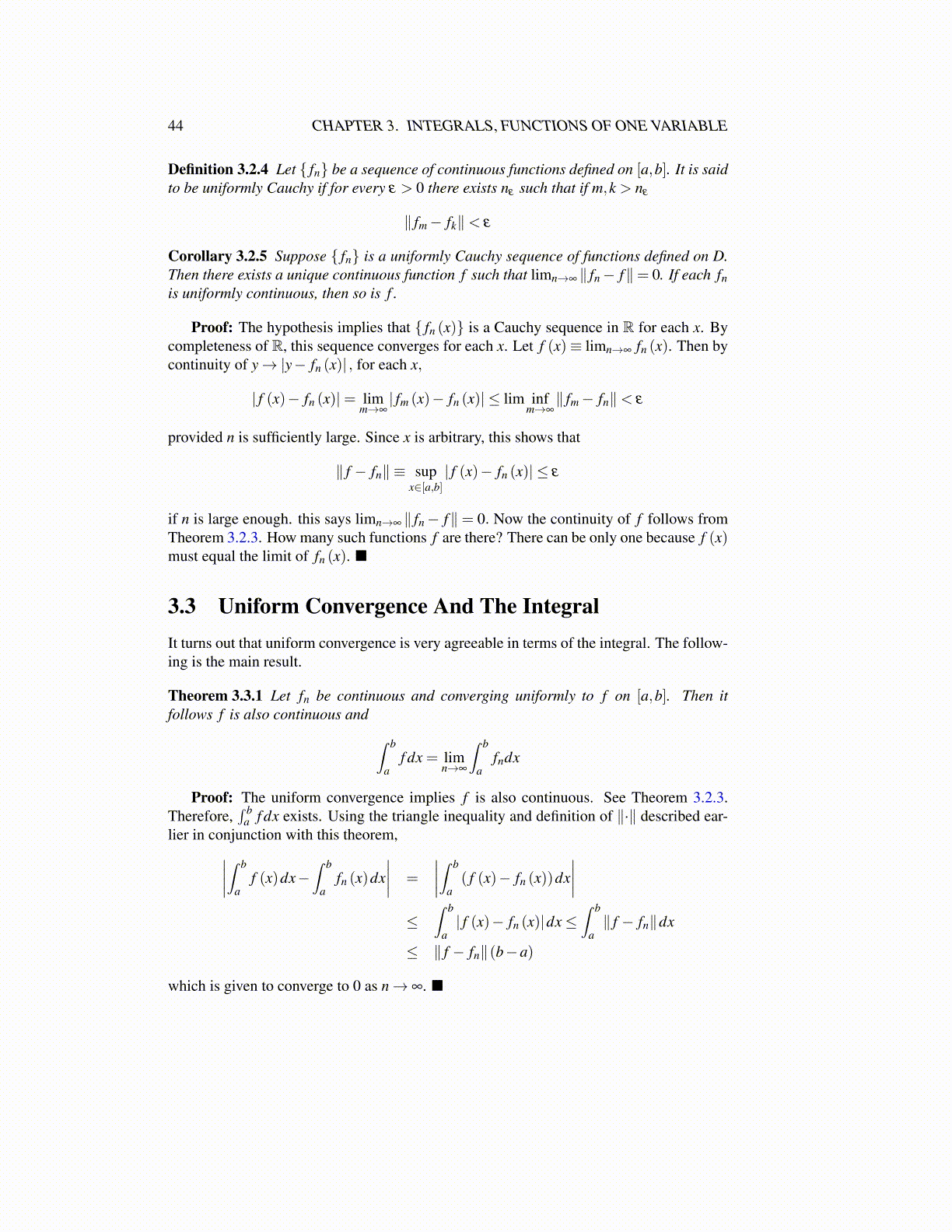
44 CHAPTER 3. INTEGRALS, FUNCTIONS OF ONE VARIABLE
Definition 3.2.4 Let { fn} be a sequence of continuous functions defined on [a,b]. It is saidto be uniformly Cauchy if for every ε > 0 there exists nε such that if m,k > nε
∥ fm− fk∥< ε
Corollary 3.2.5 Suppose { fn} is a uniformly Cauchy sequence of functions defined on D.Then there exists a unique continuous function f such that limn→∞ ∥ fn− f∥= 0. If each fnis uniformly continuous, then so is f .
Proof: The hypothesis implies that { fn (x)} is a Cauchy sequence in R for each x. Bycompleteness of R, this sequence converges for each x. Let f (x)≡ limn→∞ fn (x). Then bycontinuity of y→ |y− fn (x)| , for each x,
| f (x)− fn (x)|= limm→∞| fm (x)− fn (x)| ≤ lim inf
m→∞∥ fm− fn∥< ε
provided n is sufficiently large. Since x is arbitrary, this shows that
∥ f − fn∥ ≡ supx∈[a,b]
| f (x)− fn (x)| ≤ ε
if n is large enough. this says limn→∞ ∥ fn− f∥= 0. Now the continuity of f follows fromTheorem 3.2.3. How many such functions f are there? There can be only one because f (x)must equal the limit of fn (x). ■
3.3 Uniform Convergence And The IntegralIt turns out that uniform convergence is very agreeable in terms of the integral. The follow-ing is the main result.
Theorem 3.3.1 Let fn be continuous and converging uniformly to f on [a,b]. Then itfollows f is also continuous and ∫ b
af dx = lim
n→∞
∫ b
afndx
Proof: The uniform convergence implies f is also continuous. See Theorem 3.2.3.Therefore,
∫ ba f dx exists. Using the triangle inequality and definition of ∥·∥ described ear-
lier in conjunction with this theorem,∣∣∣∣∫ b
af (x)dx−
∫ b
afn (x)dx
∣∣∣∣ =
∣∣∣∣∫ b
a( f (x)− fn (x))dx
∣∣∣∣≤
∫ b
a| f (x)− fn (x)|dx≤
∫ b
a∥ f − fn∥dx
≤ ∥ f − fn∥(b−a)
which is given to converge to 0 as n→ ∞. ■